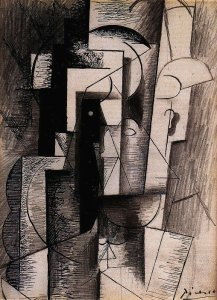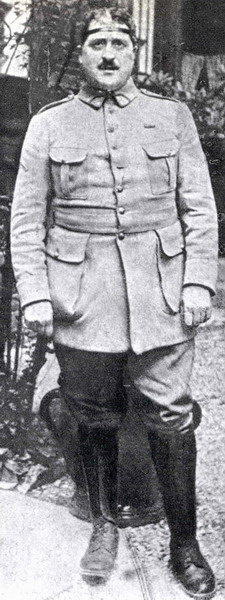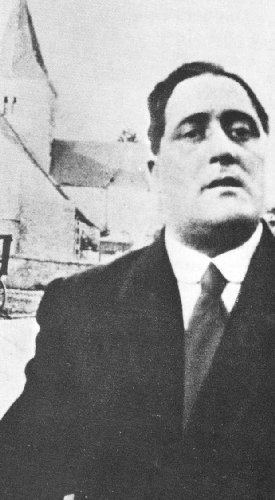Guillaume Apollinaire
1880 - 1918
![]()

- Born Guillelmus (or Wilhelm) Albert Vladimir Apollinaris de Kostrowitzky on April 20, 1880. Although he kept his origin a secret, it is believed that he was born in Rome, Italy as the illegitimate son of a Polish adventurer named Angelica de Kostrowitzky and a Swiss-Italian aristocrat named Francesco Flugi d’Aspermont.
- During his youth, Apollinaire assumed the identity of a Russian Prince.
- He was eductated in France at the College Saint-Charles in Monaco.
- Apollinaire took part in all avant-garde movements in French literature during the early 1900’s.
- In Paris, Apollinaire worked in an office. However his office went bankrupt and he became unemployed. So, he began publishing semi-pornographic books. He accumulated enough money from the endeavor to make possible his later literary activities.
- He published his first writings in 1902 under the name Apollinaire in the “Revue Blanche.” He also contributed to such periodicals as “La Plume” and “Le Mercure de France.”
- In 1903 he created his own magazine, “Le Festin d’Esope.”
- Apollinaire was a poet, writer and art critic who was one of the many great artists living and working in the Montmarte district of Paris during the early part of the 20th century. Some of his friends and collaborators at the time were Pablo Picasso, Alfred Jarry, Jean Cocteau, Erik Satie, Ossip Zadkine, and the painter Marie Laurencin, who was his lover.

Picasso's Portrait of Guillaume Apollinaire. 1913
- He is responsible for bring Picasso and Braque together which led to their collaborations on the advent of the Cubist movement.
- He was one of the first to champion Cubist painters. In 1911 he joined an offshoot branch of the Cubist movement called the Puteaux Group.
- Also in 1911, when the Mona Lisa was stolen from the Louvre by a former associate of his, Apollinaire was arrested for supposed involvement in the heist. He was later cleared of the charges.
- His first collection of poetry, “L’enchanteur pourrissant,” was published in 1909. In 1913 he published “Alcools” which truly established his reputation. His poetry during this time was influenced by symbolism and it juxtaposed the old and the new, using traditional forms and modern imagery.
- In 1913 he also published the essay “Les Peintres cubists” (The Cubist Painters) which explored the theory of cubism and analyzed psychologically the chief cubists and their works. He also coined the term “orphism” to describe a tendancy towards absolute abstraction in the paintings of Robert Delaunay and others. In fact, ten days after the publication of his book on cubism, he abandoned it for Orphism.
- He fought in World War I and in 1916 suffered a serious head wound in the temple. While he was recovering from his injury, he wrote the play “Les Mamelles de Tirésias” or “The Breasts of Tiresias” which he described as being surrealist, making it one of the first works to be described as such. He had earlier coined the term “surrealism” in the program notes for Jean Cocteau and Erik Satie’s balled “Parade,” performed in 1917. “The Breasts of Tiresias” was made into an opera in 1947 by Francis Poulenc.



Left to Right: Apollinaire in his French military garb; Apollinaire recovering from his head wound in 1916; Picasso's Portrait of Apollinaire. 1916
- He published the artistic manifesto, “L’Esprit nouveau et les poétes.”
- Guillaume Apollinaire died on November 9 of influenza during the Spanish flu pandemic of 1918. Years after his death, “Calligrammes,” a collection of his concrete poetry was published.

Resources:
Guillaume Apollinaire site officiel Page d'Accueil
Guillaume Apollinaire 1880-1918
Guillaume Apollinaire artist portrait, brief biography and art
Guillaume Apollinaire at Fact-Index
Guillaume Apollinaire Life Stories, Books, & Links
GUILLAUME APOLLINAIRE ONLINE PICASSO PROJECT
Guillaume Apollinaire French Poet
Breasts of Tiresias the Comic Book!